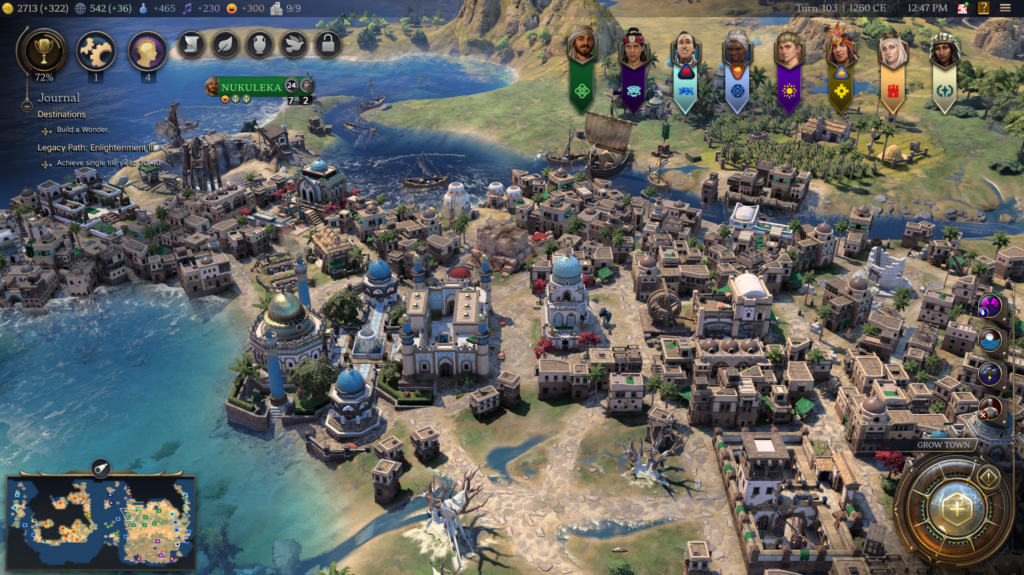Sure, a couple from VI (like the global warming system) didn’t make it, but the ones that didn’t were my least favorite ones, so I’m not complaining.
A visual return to form
Since I’m comparing prior titles, I prefer VII’s visual presentation to VI’s. It’s closer to what we got in V, which many felt was the best-looking Civ title—at least until now.
Civilization VII is not a city-building game, but its cities look more impressive than before as they gradually sprawl out through hexes adjacent to where they were founded.
Credit:
Samuel Axon
On top of that, the graphics are noticeably more detailed. Cities look awesome as they slowly grow out of their origin hex with new types of buildings and public squares. When the age changes, so does the architecture. Firaxis definitely achieved its stated objective of capturing the feeling of an old, sprawling city expanding itself in distinct historical or cultural layers.
Age transitions feel like starting a new game
The most significant change compared to prior titles is a completely new approach to ages. In most of the earlier games, the equivalent of ages was called eras (like Ancient, Classical, Medieval, Renaissance, Industrial, or Modern) and were just signposts to show how far you’d gone through the tech tree. Sometimes, certain buildings would be gated behind eras, but they weren’t really a system unto themselves.
Civilization VI introduced the Ages as a complementary concept to eras. In that, there was a sort of boom-and-bust cycle of golden and dark ages, where you’d try to achieve one or the other in the next cycle to gain certain bonuses.
Confusingly, the ages in VII mostly resemble eras of past games and include some of the ideas from VI’s ages, while also totally overhauling the whole concept.
